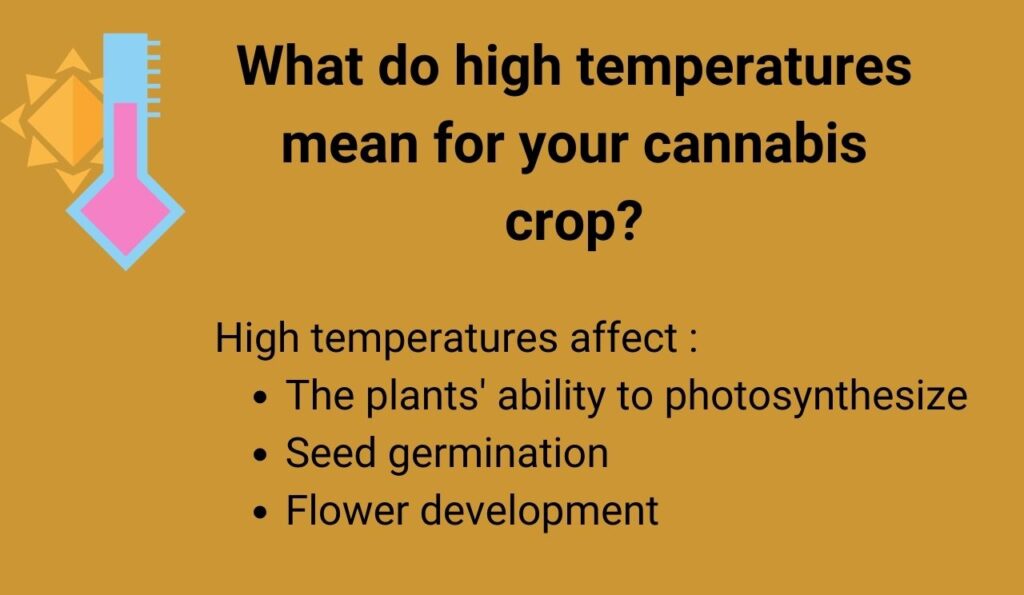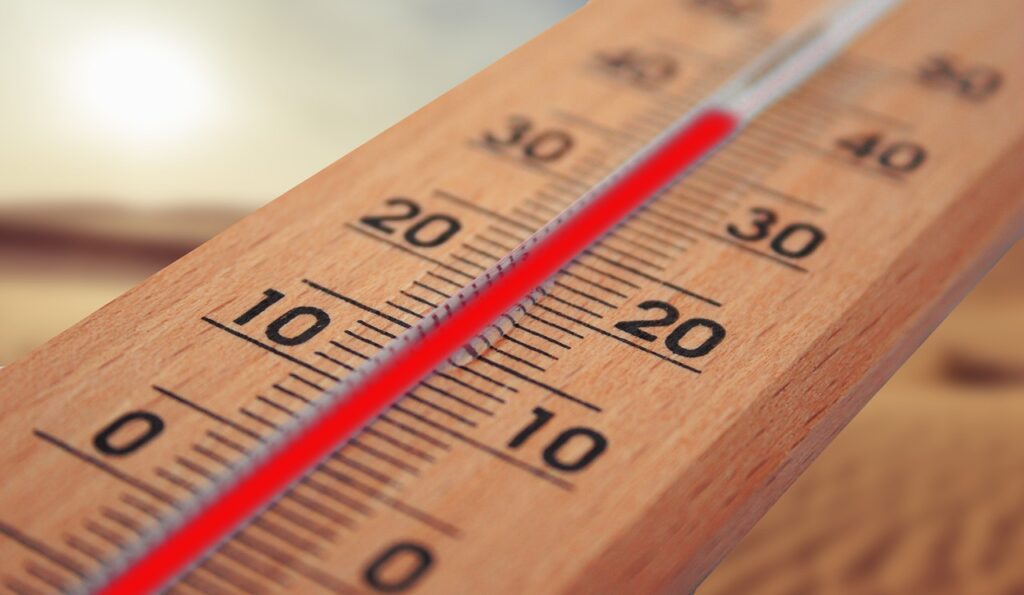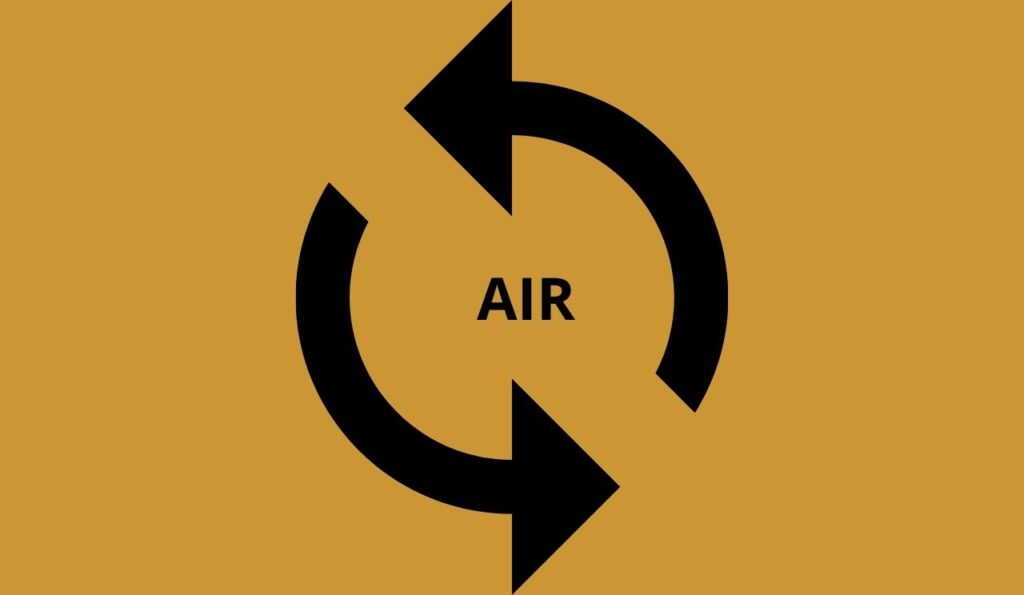Growing a high-quality crop in a grow room involves being able to mimic nature, mainly with the help of dehumidifiers and artificial lighting. The lights fuel bud production and dehumidification ensures that there’s no bud rot or the risk of losing the entire crop. However, while both lights and dehumidifiers are crucial in a grow room, they produce a lot of heat.
Take LED, fluorescent, or even HPS lights for example. All these lights are basically light-emitting heaters. When you leave them switched on in the grow room, the space will heat up. Dehumidifiers don’t fare better, and they are just as responsible for producing a lot of heat in the grow space.
Although some heat will always exist in the grow room, too much heat is a problem. In fact, high temperatures are one of the most common issues indoor growers have to deal with. Growers need to maintain the optimal grow room temperature to avoid the negative effects of high temperatures on plant health.
What do high temperatures mean for plants?

High grow room temperatures contribute to several problems in the grow room. For instance, high temperatures affect:
- Plants’ ability to photosynthesize. Photosynthesis is a fundamental life process for all plants, and so affecting a plant’s ability to photosynthesize affects all of that plant’s metabolic functions.
- Seed germination. Seeds need to take in water to germinate, and they need sufficient moisture for this to happen. High temperatures increase evaporation and reduce moisture, thereby negatively affecting germination.
- Flower development. High temperatures lead to earlier flowering and small flowers. Too much heat during the flowering stage will also slow down bud growth and reduce the plants’ smell and potency.
- Plants’ roots and leaves. Hot temperatures affect transpiration, which in turn, causes stress on the leaves and roots of the plant.
Heat stress can trigger hermaphroditism (when plants start producing male pollen) and in extreme cases, the death of plant tissue. High temperatures also make the perfect breeding ground for bacteria and mold. Altogether, these problems eventually shut your plants down and leave you with low-quality yields, if any.
Many growers face heat issues at some point. So how do they fix the high grow room temp?
Two of the best ways to fix this problem are:
- cooling the grow room down; and
- ensuring that the temperatures don’t get too high to a point where they affect plant health
But before you can cool the grow room or control the grow room temperature, you need to know how to detect temperatures that are too high. This is how you do it.
How to detect “too high” temperatures in the grow room

A lot of the detection will depend on the plants’ growth stage. For example, a plant that experiences heat stress during the vegetative phase will exhibit different symptoms to a plant that experiences the same stress during the flowering phase.
The following are some signs of high grow room temperature at the various growth stages.
Seedlings:
- Pale and withered new leaves
- Stunted growth
- Plant death
Vegetative stage:
- Dry and withering leaf edges
- Curling leaf tips
- Brown or burnt spots
Flowering stage:
- Leaf curling
- Yellowing leaves
- New growth patterns, e.g. foxtail buds
- White pistil production before harvest
It also helps to know the ideal temperatures at each stage of the grow cycle. The last thing you want is to cool down the grow room to a point where the environment is not ideal for plant growth. Here are some ideal temperatures you should be aiming for in your grow room:
Seedlings and clones
Temperatures don’t vary much underground where seedlings start their life and clones require a stable environment to recover from the cloning process. In both cases, maintaining stable temperatures is vital. The recommended room temperature when lights are on is 68-77°F (20-25ºC), and 59-68°F (15-20ºC) when lights are off. Temperatures above this are likely to become too stressful for the seedlings and clones.
Vegetative stage
The plants can handle slightly higher temperatures during the vegetative stage. During this phase of the growth cycle, the plants can handle temperatures of around 68–86ºF (20–30ºC) when lights are on, and 64–72°F (18–22°C) when the lights are off. It’s important to note that during this stage, plants are threatened by temperatures below 59ºF (15ºC).
Early flowering stage
At this stage, the general idea is not to exceed temperatures of around 82ºF (28ºC).
The room temperature with lights on should be around 68–79°F (20–26°C), and 61–72°F (16–22°C) with the lights off.
Mid to late flowering stage
Excess heat during this growth stage can burn the smell away and lower THC content, so it’s important to maintain temperatures of around 64–75°F (18–24°C) when the lights are on. Increasing the difference between day and night temperatures by up to 50°F (10°C) can yield even better results. It’s also important not to exceed around 82ºF(28ºC) unless you’re supplementing with CO2.
Once you know how to detect grow room temperatures that are too high and the temperatures you should aim for, it’s time to cool things down.
How to cool a grow room that’s too hot
The following solutions will help you cool down your grow room and maintain the grow environment temperature.
1. Increase air exchange and improve airflow

Air conducts heat from the heat sources to the plants, therefore increasing air exchange and improving airflow are two of the most efficient ways to deal with excessive heat. The more air exchange takes place, the more heat is removed.
But while many growers gravitate towards exhaust fans to expel air from the grow room, these fans can be excessively noisy. A specialized HVAC solution that optimizes airflow and air exchange in the grow room may be a better solution. Granted, a specialized system may require a high investment, but the optimal environment it creates is worth the money.
2. Improve humidity
It’s true that where temperature is, humidity will likely follow. Temperature and humidity affect each other, therefore, you can control high temperatures by controlling the relative humidity. Increasing relative humidity can help you decrease the temperature. As such, if you’re dealing with an unusually high temperature and your grow space relative humidity is low (60% in the vegetative phase and 40% during the flowering stage), you have to increase the humidity level.
An efficient combination of a humidifier/dehumidifier will help ensure the optimal humidity to help you maintain ideal temperatures at every stage of the grow cycle. A system specifically built to balance temperature and humidity in the grow space is an even better option.
3. Adjust your lighting setup
Adjusting your lighting system is another great way to tame excessive heat. Many growers will raise their light sources to reduce heat, but while this will reduce the direct heat on the plants, it won’t decrease the overall temperature in the grow room. Fixing the problem of heat from lighting requires dealing with the lights themselves. Some good ways to do this include:
- Choosing the right lights. For instance, LEDs are better than HID and plasma lighting when it comes to producing a lot of heat.
- Finding the correct wattage of lighting for your grow.
- Altering your light schedule. For example, depending on the growth stage of your cannabis, you can run the lights during the night when ambient temperatures are lower, or you can switch off half of your lights for a while.
4. Supplement with CO2

Supplementing your grow room with CO2 will allow you to run temperatures much higher than the typical recommended values. Increasing CO2 levels increases the moisture content in the grow room, and with that, the plants’ tolerance levels. With more CO2, plants won’t dry out so easily and they may even be able to reach the 95ºF (35ºC) range safely.
However, since CO2 creates more moisture, it will increase the humidity in your grow room, and this will increase the risk of fungus and rot. Additionally, unregulated CO2 can create a toxic environment for your plants and yourself. CO2 levels over 2000ppm can kill plants, and levels higher than that can become unsafe for humans and animals to breathe.
Lastly, CO2 can also become quite expensive. But if done correctly and regulated well, the ROI of supplementing with CO2 can be worth more than the cost.
Maintaining the ideal grow room temp
If you’re too worried about the heat, you can start on the right path by choosing a stable cannabis strain. For instance, Sativa-dominant strains that are indigenous to the tropics of Central and South Africa, Mexico, India, Jamaica, and Thailand are naturally adapted to high temperatures. It makes sense to plant seeds that have good heat resistance qualities in their genes.
But even without these cannabis strains, a specialized HVAC system can help you maintain the ideal grow room temperatures. Harvest Air, for example:
- is designed with both cooling and dehumidification to handle cannabis grow environments. No need to worry about temperature messing up the humidity, and vice versa.
- has variable speed compressors and a fully modulating hot gas reheat coil that accurately match the dehumidification and cooling load at every stage of the grow cycle. Again, this means that you don’t have to worry about excessive temperatures and maintaining the ideal grow room environment conditions.
Capitalizing on a specialized solution has many advantages. Not only will you avoid complications such as stunted plant growth and bud rot, but you will also achieve peak performance and be rewarded with handsome, high-quality yields.
Get in touch with us today for some tailored insights and solutions that can help you deal with high grow room temperatures.